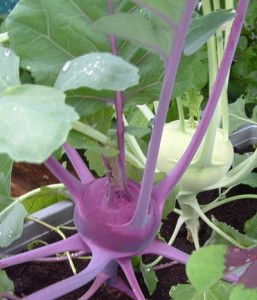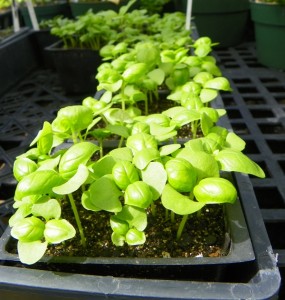Growing Flowers and Vegetables From Seed
go.ncsu.edu/readext?279435
en Español / em Português
El inglés es el idioma de control de esta página. En la medida en que haya algún conflicto entre la traducción al inglés y la traducción, el inglés prevalece.
Al hacer clic en el enlace de traducción se activa un servicio de traducción gratuito para convertir la página al español. Al igual que con cualquier traducción por Internet, la conversión no es sensible al contexto y puede que no traduzca el texto en su significado original. NC State Extension no garantiza la exactitud del texto traducido. Por favor, tenga en cuenta que algunas aplicaciones y/o servicios pueden no funcionar como se espera cuando se traducen.
Português
Inglês é o idioma de controle desta página. Na medida que haja algum conflito entre o texto original em Inglês e a tradução, o Inglês prevalece.
Ao clicar no link de tradução, um serviço gratuito de tradução será ativado para converter a página para o Português. Como em qualquer tradução pela internet, a conversão não é sensivel ao contexto e pode não ocorrer a tradução para o significado orginal. O serviço de Extensão da Carolina do Norte (NC State Extension) não garante a exatidão do texto traduzido. Por favor, observe que algumas funções ou serviços podem não funcionar como esperado após a tradução.
English
English is the controlling language of this page. To the extent there is any conflict between the English text and the translation, English controls.
Clicking on the translation link activates a free translation service to convert the page to Spanish. As with any Internet translation, the conversion is not context-sensitive and may not translate the text to its original meaning. NC State Extension does not guarantee the accuracy of the translated text. Please note that some applications and/or services may not function as expected when translated.
Collapse ▲If you have never grown plants from seed let this be the year you start. You do not need a greenhouse to grow healthy transplants and many varieties can be started indoors over the next month to transplant to the garden this spring.

Want to grow something new or unusual, such as this kohlrabi? Chances are you will have to start it from seed.
What You Can Grow
Many summer vegetable and flower seed can be started indoors in March. Large seeded flowers and vegetables are the easiest to grow and include cucumbers, zucchini, squash, melons, cosmos, marigolds, nasturtium, zinnias, and sunflowers. To get a head start on the season, seeds of these varieties can be sown indoors in mid-March to transplant outdoors after the threat of frost.
Slower growing vegetable and flowers should be started indoors a little earlier, ideally from mid to late February to have transplants ready to set out in mid-April. These include tomatoes, peppers, eggplants, basil, impatiens, and begonias. Vegetables and herbs that like cool weather such as parsley, cilantro, broccoli, spinach and lettuce, can also be started indoors at this time and transplanted outside in mid-to-late March, where they will be able to tolerate light frost.
Containers and Soil
You do not have to buy special containers to start seed indoors. Any type of shallow, 3”– 4” deep container can be used as long as there are several drainage holes in the bottom. Seed can also be sown directly into individual pots such as 6 packs or peat pots. Sowing in individual containers works particularly well for large seed.
Seed should be started in a fine textured potting soil such as a seed starting mix. Lightly moisten the soil before putting it into your pots. Most seed are sown twice as deep as they are thick, so larger seed are planted deeper. Some seed, like lettuce, need light to germinate and are only sown on the soil surface – check the seed packet to see if the seeds you are sowing have any special requirements. For details on growing a wide range of flowers and vegetables from seed, see this Missouri Extension publication.
Growing On
After sowing seeds into containers, water gently and place the containers in a warm (65 to 75 degrees) location. Place clear covers over your seeds or place the containers in plastic bags to keep humidity high, which will speed up germination. If kept covered, seed will usually not need to be watered again until after they have germinated.
Most flower and vegetable seeds will begin to germinate in five to seven days. When seedlings start to emerge, remove the clear covers and place containers in a brightly lit area. You can begin fertilizing seedlings when they are a few weeks old with a weak solution of liquid fertilizer or compost tea. Keep plants moist but not soaking wet and never leave them sitting in a saucer of standing water. A week before you plan to transplant your seedlings into the garden, start placing them outside a few hours each day so they can adapt to outdoor conditions.
To find out about upcoming Extension workshops, classes, and events in your area, visit the Gardening website or contact your local N.C. Cooperative Extension center.
Seed Sources
Many garden centers stock a wide range of flower and vegetable seed this time of year. If you can’t find what you are looking for locally, try one of the many online seed companies. Here are a few possibilities:
- Johnny’s Seed: Flowers, vegetables, herbs, cover crops and excellent information. Request a catalog or shop online
- Burpee Seed – one of the oldest seed companies in the U.S.
- Park Seed – located in Greenville, SC
- Seed Savers Exchange – dedicated to preserving heirloom varieties
- Seeds of Change – specializing in organically produced seed
- Select Seeds – specializing in heirloom flowers
- J.L. Hudson – No color picture but lots of interesting varieties – carries only open pollinated varieties (which means you can save your own seed and they will come true)
- Kitazawa Seed Company – Asian vegetable seeds. like bok choi, chinese cabbage and many others.
Learn More
- Starting Seeds Indoors, Clemson Extension
Contact your local N.C. Cooperative Extension office to learn more about gardening and landscape care. Find your county Extension center.
Visit the N.C. Cooperative Extension of Pender County Lawn and Garden webpage to stay up to date with all the latest gardening news for southeastern coastal North Carolina.




